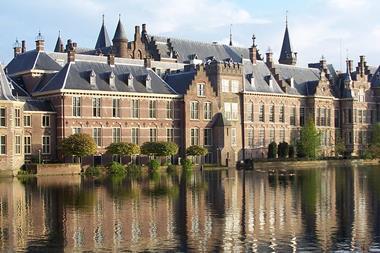More Dutch pension funds are facing cuts of pension rights and benefits following a dramatic funding drop in the first week of August.
As a consequence of a combination of persistently lower interest rates and falling equity markets, their funding decreased by no less than four percentage points, according to Aon Hewitt and Mercer.
Funding had already dropped at least one percentage point on average in July.
The consultancies said that long-term interest rates had decreased 20 basis points on average, resulting in the 30-year swap rate – the main criterion for discounting pension funds’ liabilities in the Netherlands – falling to around 30bps as at the end of Wednesday.
However, the current ultimate forward rate of 2.2%, against which the schemes are allowed to discount their liabilities, cushioned the drop in interest rates.
Aon estimated that the falling rates had caused the valuation of liabilities to rise more than 4% on balance.
It attributed the drop in rates to the escalating trade conflict between the US and China, a worsening economic outlook, and increasing uncertainty around Brexit.
The consultancy also cited hints by several central banks that they were considering monetary easing. However, it noted that this had limited losses on equity markets.
“If our funding doesn’t improve, we will already have to apply a discount next year.”
Peter Borgdorff, director of PFZW
Schemes’ so-called policy funding – their average coverage of the past 12 months – is the main criterion for rights cuts and indexation, and this is to fall further in the coming months as a result of the recent funding drop.
Mercer said it expected the policy funding to drop to 104% on average at the end of this month.
Although the cabinet had temporarily lowered the minimum required coverage ratio from 104.3% to 100%, it has also raised the so-called critical funding level, which is different for different schemes.
Pension funds with a coverage short of this critical level must immediately cut pension rights and benefits, as they cannot make a reasonable case for recovery to the required funding of around 125% within 10 years.
The cabinet is also to reduce the allowed assumptions for future returns as of 2020, which will limit pension funds’ recovery potential.
ABP and PFZW under pressure, too
Although the most recent funding figures of the large pension funds date from the end of June, a funding drop of five percentage points since then would mean that the coverage ratios of civil service scheme ABP, healthcare pension fund PFZW, and the metal schemes PMT and PME had dropped to between 90% and 92%.
Under the old rules – with a minimum required funding level of 104.3% – PMT and PME were already facing cuts next year.
However, given the current situation, even the new threshold of 100% won’t be sufficient to prevent discounts, which could be as high as 8%.
ABP and PFZW have a year’s respite on cuts compared with the metal schemes.
However, in their new recovery plan next year, in which they must factor in the lower parameters for future returns, their funding must be above the critical level to avoid immediate cuts.
The critical funding level for ABP and PFZW will be 95% and 94% as of 2020. If PFZW’s funding would stand at, for example, 91% at the end of this year, it must cut pension rights and benefits by 3% next year.
“If our funding doesn’t improve, we will already have to apply a discount next year,” said Peter Borgdorff, director of the healthcare scheme.
“It can only be prevented if social affairs minister Wouter Koolmees decides to suspend cuts,” he added.
Trade union FNV had already called on the government to delay rights discounts during the implementation of the pensions agreement between the social partners and the cabinet in June.
Borgdorff said: “At the conclusion of the accord, the parties said that rights cuts would be avoided. It doesn’t improve the credibility of the pensions system, if discounts have to be applied within a year.”
Rights cuts at the four largest pensions funds would affect almost eight million pension entitlements in the Netherlands.

























No comments yet